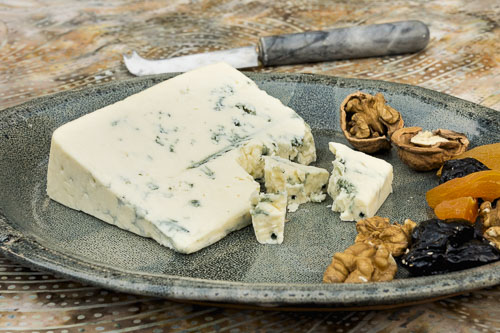Welcome back, Maytag Blue. We’ve missed you. Just in time for holiday cheese boards, this beloved Iowa product has returned to shops. It has been almost two years since Maytag Dairy Farms suspended production, in the aftermath of a positive test for Listeria in two lots of cheese. (No related illnesses were ever reported.) The road back has been longer and costlier than the owners imagined, but they managed to find a silver lining in this traumatic experience.
In February 2016, Maytag voluntarily recalled 900 pounds of cheese after the state’s lab found Listeria monocytogenes during routine sampling. A consulting microbiologist never found the cause, but the experience accelerated plans for a major updating of the 75-year-old creamery.
Like most remodels, it took twice as long and cost four times as much as expected, said John Dannerbeck, the company’s chairman. ”We spent all of our savings, sold a farm that had been in the family for 120 years and then borrowed a ton of money from the bank,” Dannerbeck told me via e-mail. Despite the obvious blow to cash flow, the company kept all of its employees on full pay and benefits throughout.
Pioneers of blue: Early days at Maytag
Maytag Blue is owned by 11 descendants of Fred Maytag, whose grandfather started the appliance company. Fred’s father launched the dairy farm in 1919 and built a prized herd of show cows. Fred initiated the cheesemaking after traveling to Europe and tasting the classic blue cheeses there. Iowa State University dairy scientists developed the original recipe, and the family paid royalties to the university for years. Introduced in 1941, the cheese was possibly America’s first cow’s-milk blue, according to company president Myrna Ver Ploeg.
In August, the first wheels left the new plant after four months of aging—not long enough, says Dannerbeck, but, understandably, the company needs to get sales moving again. Presumably, future wheels will get another month or two in cold storage, which would likely make them a bit spicier and creamier.
The recipe is the same, yet different. After 75 years, Maytag Blue is no longer a raw-milk cheese. I’m sad about that, but it still has the buttermilk-slash-ranch dressing aroma I remember and the same moist creaminess. A rindless four-pound blue with light to moderate veining, it’s properly salted and deeply flavorful, with a full, lingering tang but no peppery bite. I can easily eat more than I mean to.
Put Maytag Blue on a cheese board with an aged Gouda and open some Port. Add nuts in the shell and some ripe pears or persimmons. Buy extra cheese for a salad the next day: Hearts of escarole and radicchio with sliced pears or persimmons, toasted walnuts and crumbled Maytag Blue. Sweet, salty, crunchy and creamy—it’s all there.
In California, look for Maytag Blue at Cheese Board (Berkeley); Dean & DeLuca and Sunshine Foods (St. Helena); Draeger’s (multiple locations); Harvest Market (Fort Bragg); Larchmont Village Wine & Cheese (Los Angeles); and Taylor’s Market (Sacramento). It should be relatively easy to find in the Midwest and at Gourmet Cellar (Livingston, MT) and Balducci’s, Fairway and King’s Super in New York.


